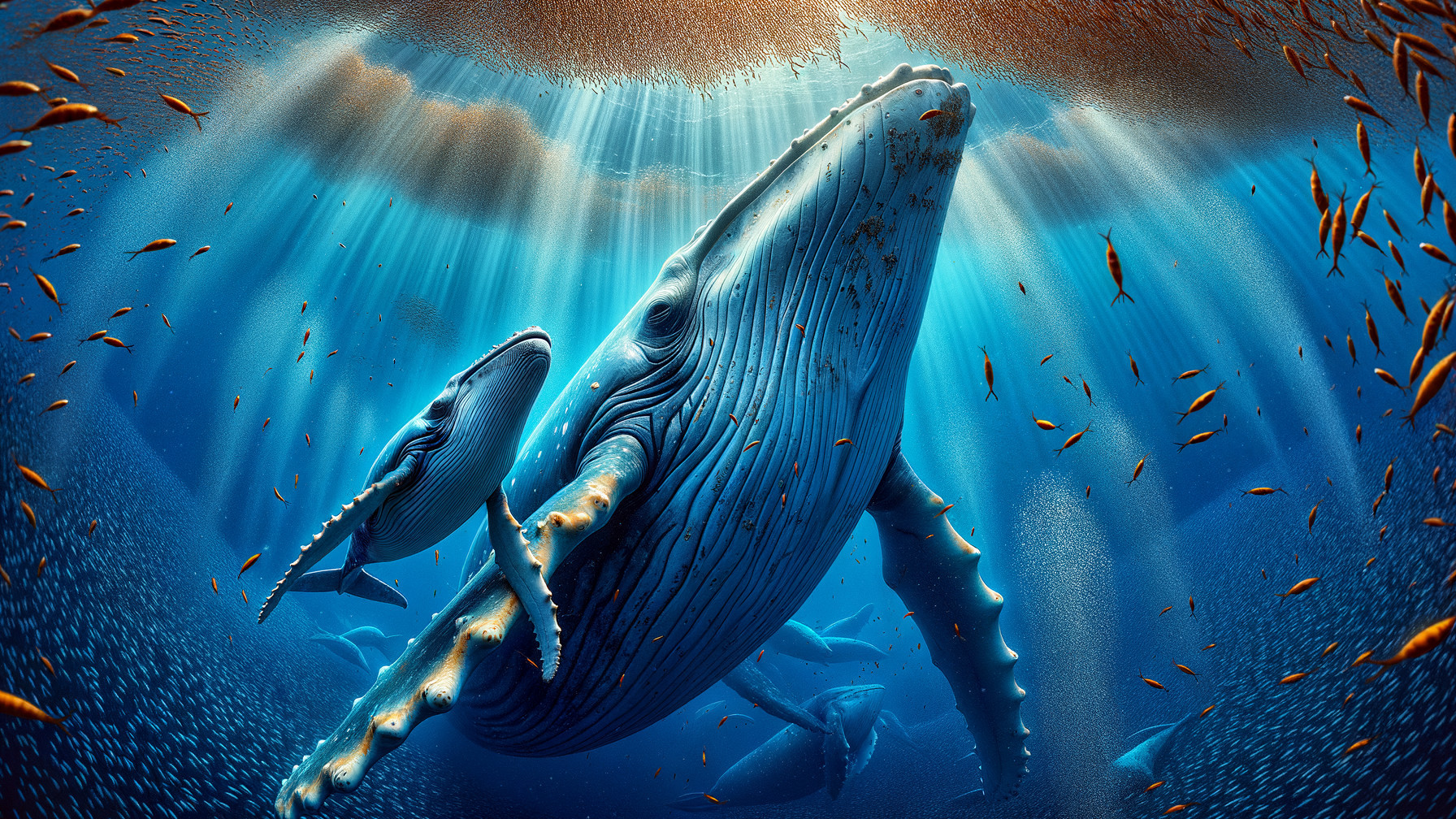Comments
Loading Dream Comments...
You must be logged in to write a comment - Log In

 Artist
Artist
**Blue Whale (Balaenoptera musculus)
Description:
The Blue Whale is a living miracle - the largest animal ever to exist on Earth, even surpassing the mightiest dinosaurs. Its immense presence embodies the awe of the open ocean: a creature that can reach over 30 meters (100 feet) in length and weigh more than 180 tons, yet feeds on some of the smallest life forms - tiny krill. Each heartbeat of a blue whale can be heard from over two miles away underwater, a slow, resonant thud echoing through the deep, like the pulse of the planet itself.
Blue whales were once nearly wiped out by commercial whaling in the 20th century. From a pre-whaling population of more than 300,000, fewer than 10,000-25,000 are thought to survive today, spread across scattered ocean basins. Though they are now protected, these ocean giants remain endangered, threatened by ship strikes, entanglement in fishing gear, and noise pollution that interferes with their ability to communicate across vast distances.
Scientific Name: Balaenoptera musculus
Common Name: Blue Whale
Habitat: Deep pelagic waters of all major oceans - from the Southern Ocean to the North Atlantic and Pacific
Diet: Almost exclusively krill (tiny shrimp-like crustaceans)
Length: Up to 30 meters (98 feet)
Weight: Up to 180 metric tons (400,000 lbs)
Blow height: Can reach 9 meters (30 feet)
Lifespan: Up to 90 years, though some live longer
Conservation Status: Endangered (IUCN Red List)
Estimated Population: Approx. 10,025,000 individuals, divided into small subpopulations (e.g., Eastern North Pacific, Antarctic, Sri Lankan)
Major Threats:
Ship collisions in high-traffic routes
Entanglement in fishing gear
Noise pollution from ships and military sonar disrupting migration and communication
Climate change affecting krill abundance, their primary food source
Pollution (microplastics, oil spills, heavy metals)
Ecological Role:
The blue whale is a cornerstone of marine ecosystems. Its feeding behavior drives nutrient cycling - each time a whale dives deep and surfaces to release feces, it fertilizes the ocean with iron and nitrogen, stimulating phytoplankton growth that sustains marine life and produces much of the world’s oxygen. They are the gardeners of the sea, quietly nurturing life across the blue expanse.
Behavior and Life:
Blue whales are mostly solitary, though they occasionally travel in small groups. They migrate thousands of kilometers each year between cold feeding grounds and tropical breeding areas. Their songs - haunting, low-frequency calls - can travel across entire ocean basins, serving as communication and possibly navigation tools. Calves, born after 11-12 months of gestation, are already 7 meters (23 feet) long and weigh nearly 3 tons, growing rapidly on their mother’s rich milk.
2025 November 01